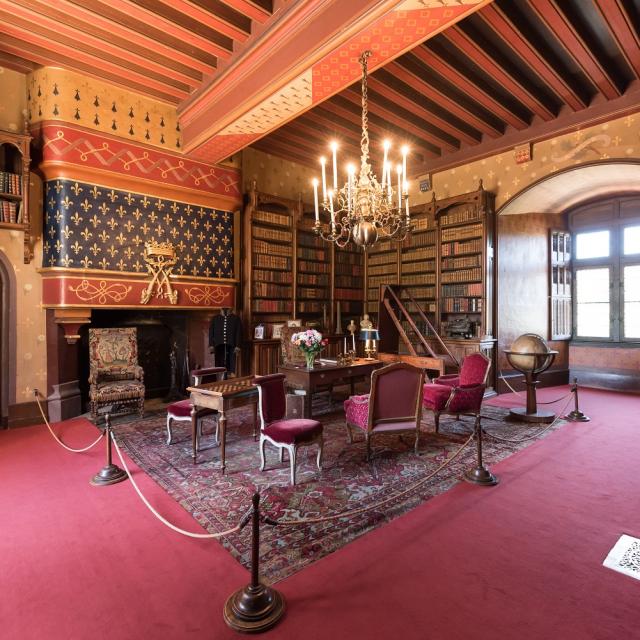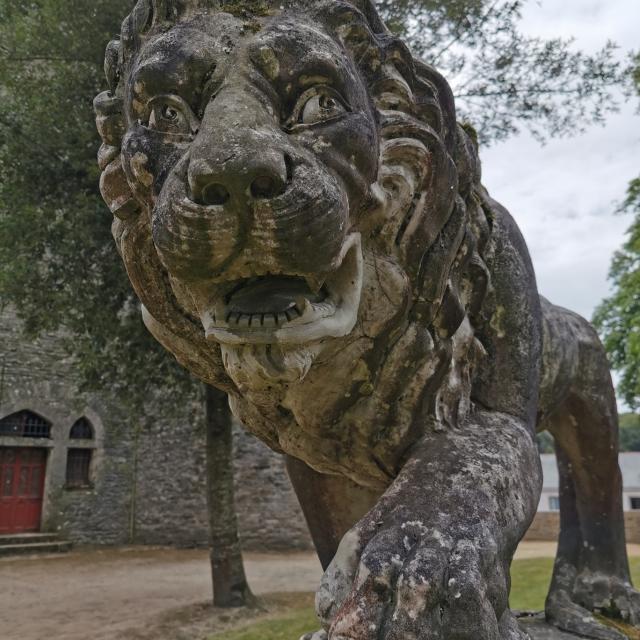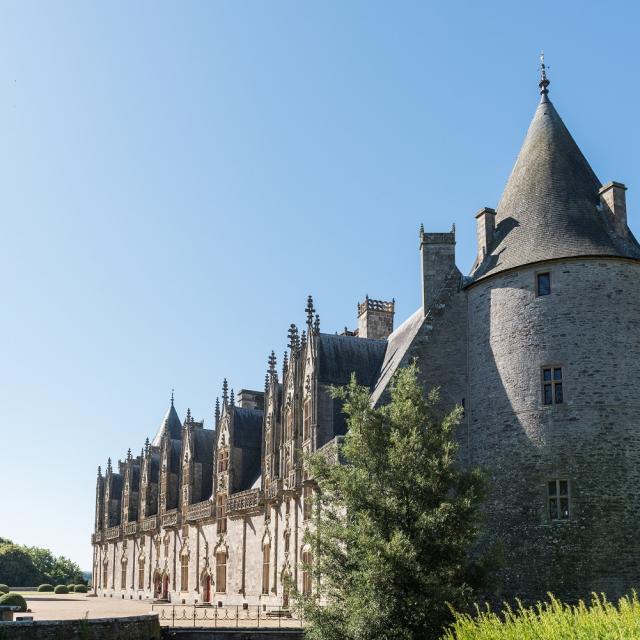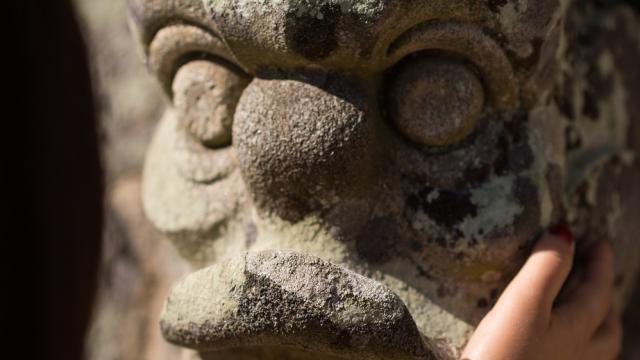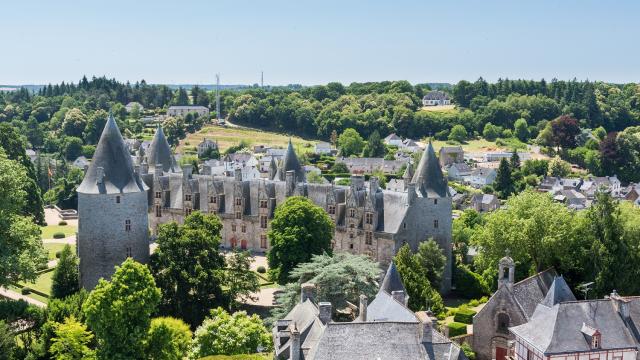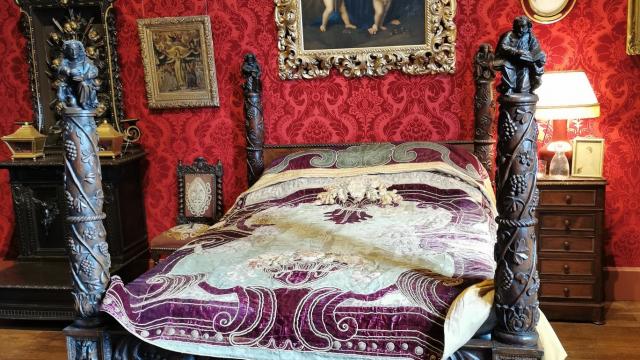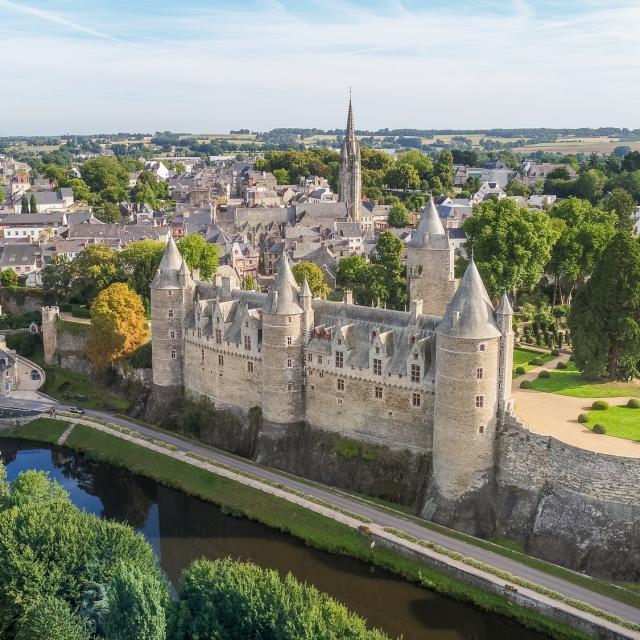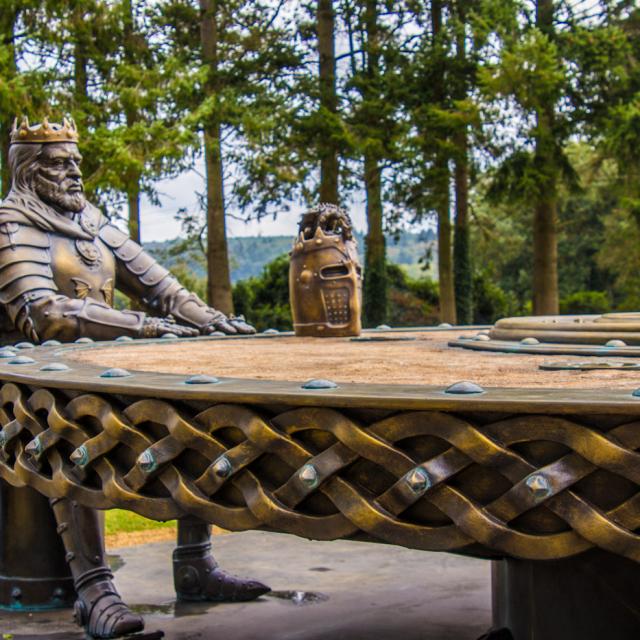His History
The history of the castle of Josselin goes back to the 11th century. Lord Guéthennoc had a first wooden castle built. The place was chosen for its dominant position overlooking the river Oust, favorable militarily and commercially. Also located at the intersection of two Roman roads, the new fortress took the name of his son, Goscelinus, which would become Josselin over time.
The castle passed through the hands of several families before being ceded in 1370 to Olivier de Clisson. He made it the best armed fortress in Brittany with a feudal enclosure of 4500 m², 25m high ramparts marked out by nine towers and an enormous keep. But, banished from the kingdom of France and sentenced to death, Clisson took refuge in his besieged stronghold where he died. After his death, the castle became the property of Alain VIII de Rohan and has remained with this family to this day. However, many historical facts have marked the centuries between confiscation, desertion, demolition, dismantling, transformation into prison…
The castle was returned to the Rohan family in 1799 in an advanced state of dilapidation. It was not until 1835 that Charles de Rohan-Chabot decided to undertake a restoration. Work began in 1855 under the direction of the architect Jules de la Morandière, a student of Viollet-le-Duc. The exterior was restored and the interior decorated in a neo-Gothic style. It will open to the public from 1930 while remaining the main residence of its owners.
His architecture
The castle of Josselin has an architecture all the more remarkable that two styles and two eras coexist harmoniously. Of the imposing citadel, only the main building remains as well as a separate tower, all the rest having been dismantled in 1629 by Cardinal de Richelieu who wanted to make all non-royal fortresses disappear. The particularity of the castle of Josselin is that it is entirely built of granite.
On the Oust side, we find a medieval architecture typical of military architecture, composed of three imposing round towers, linked together by curtains.
On the courtyard side, the façade, commissioned between 1495 and 1506 by Jean II de Rohan, is a remarkable achievement of the flamboyant Gothic and Breton Renaissance. The main body of the dwelling is all in contrast between its openings emphasized by accolade arches, and the set of dormer windows linked together by galleries carved with numerous decorative motifs.
The visit of the castle
The visit of the castle of Josselin is broken down into three parts: the castle, the gardens and the museum of dolls and toys.
The castle can be discovered either as part of a guided tour or freely with a booklet. A tour is also adapted for children. Through the sumptuous rooms in a row composed of a reception room, salons and a magnificent library, furniture and works of art generously adorn the premises. Since 2021, new rooms have been opened to visitors, including an office, the bedroom of Herminie de Rohan and a room dedicated to rare objects previously held in the castle’s attics.
In the gardens, a French-style park stands out in front of the castle with vast lawns framed by yew trees and boxwood. In the moat, two lions dominate the place and watch over the gardens. Below is the rose garden where 40 varieties and 160 rosebushes adorn the paths. Finally, by continuing the central alley, an English-style park stands in the valley where rare trees, a collection of hornbeams, hydrangeas and rhododendrons adorn this park protected by imposing hundred-year-old trees.
The Doll and Toy Museum features the largest private collection in France. This collection of dolls had been started by Herminie de Rohan in the 19th century. They are in total more than 5000 pieces, in particular a set of dolls from Japan. Each year, the theme of the exhibition changes.
The new features
In 2022, an escape game takes place on the second floor of the castle, in a room previously unknown to visitors. Make an immersion in the 19th century by following the steps of Louise de fleur de fil!
